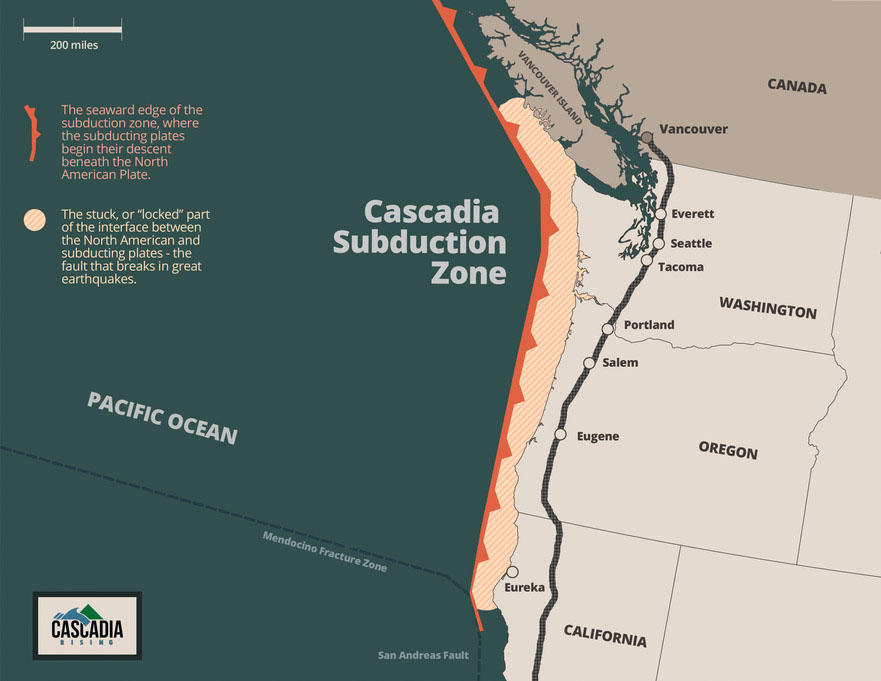
«The Big One» refers to a hypothetical major earthquake that is expected to occur along the West Coast of North America, particularly in the region known as the Cascadia Subduction Zone. This seismic event has been a subject of concern among scientists, emergency planners, and residents of the affected areas due to its potential for widespread devastation. In this article, we will delve into the characteristics, predictions, and potential consequences of «The Big One,» shedding light on the urgency to prepare for this looming disaster.
The Cascadia Subduction Zone: The Cascadia Subduction Zone stretches approximately 700 miles from northern California to southern British Columbia. It is a fault line where the Juan de Fuca tectonic plate is sliding beneath the North American plate. This subduction zone is capable of producing megathrust earthquakes, which occur when the accumulated stress along the fault line is suddenly released. Scientific studies suggest that the Cascadia Subduction Zone has experienced massive earthquakes in the past, with an average recurrence interval of around 250 years.
Characteristics and Predictions: Based on geological evidence, seismologists estimate that «The Big One» could range between magnitude 8.7 and 9.2 on the Richter scale. This magnitude would place it among the most powerful earthquakes recorded in modern history. It is projected to generate intense ground shaking that would be felt across a vast area, including major cities like Vancouver, Seattle, and Portland. Additionally, the quake is expected to trigger tsunamis that could inundate coastal regions and cause further destruction.
Potential Consequences: «The Big One» has the potential to cause significant damage to infrastructure, including buildings, bridges, and roadways, leading to substantial casualties. Moreover, the impact on critical lifelines such as water, electricity, and transportation systems could hinder emergency response efforts and exacerbate the aftermath. The resulting tsunamis, with heights ranging from 30 to 100 feet, could devastate coastal communities, causing immense loss of life and economic damage.
Preparation and Mitigation: Recognizing the threat posed by «The Big One,» efforts have been made to enhance preparedness and resilience in the affected areas. These include stricter building codes, retrofitting vulnerable structures, and the establishment of early warning systems to provide seconds or minutes of advance notice before shaking begins. Public awareness campaigns and emergency drills have also been implemented to educate residents about the necessary steps to take during and after a major earthquake.
«The Big One» earthquake represents an imminent threat to the West Coast of North America. Its potential for widespread devastation necessitates urgent action in terms of preparedness, mitigation, and response strategies. While the exact timing of this earthquake remains uncertain, being proactive in enhancing community resilience and individual preparedness is crucial. By understanding the risks and taking appropriate measures, individuals and communities can minimize the impact of this catastrophic event when it eventually occurs.
Glossary:
Critical lifelines – Infraestructuras críticas
Fault line – Línea de falla
Ground shaking – Sacudida del suelo
Hinder – Obstaculizar
Looming disaster – Inminente desastre
Public awareness campaigns – Campañas de concienciación pública
Released – Liberado
Retrofitting – Renovación
Shedding light on – Arrojar luz sobre
Sliding beneath – Deslizándose debajo de
